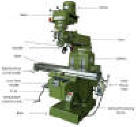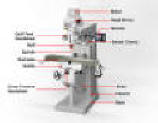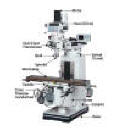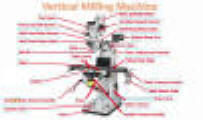| The vertical
milling machine is a precision tool used for shaping and fabrication by
the removal of stock typically from metallic work pieces. Plastics and
other materials can also be machined on the mill depending upon tooling
and material. Mill controls may be manually operated, computer numerical
controlled (CNC), or a combination of both. Mill machining and material
removal is typically made by a rotary cutter held in a spindle. Cutting
options are more sophisticated and variable than a drill press by virtue
of a moveable table and/or vice (x and y-axes) and vertical spindle
movement (z-axis). Many vertical mills also have a rotatable turret for
the upper cutting head which provides even greater machining options
(b-axis). A diagram is included in this procedure to help illustrate the
varying axes. Some
of the common operations that can be performed on the mill include:
- Milling– These
operations provide a flat surface or spot on a work piece, typically
with a specific
orientation to other work piece features, surfaces, or another
piece. Facing is sometimes used
on an irregular shaped work piece to “true” one surface at a time to
ensure that all surfaces
have appropriate specific geometric relationships with each other.
- Slotting or keyways
– Slots, flats, or keyways can be cut with proper clamping.
- Drilling or boring –
Where specific orientations are required between work piece
features, the
vertical mill provides the means to accurately index and machine
holes
|







